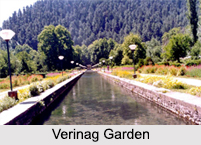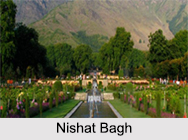 History of Mughal Gardens in India is derived from the Islamic architecture and the Persian architecture. After the Battle of Panipath in 1526 AD, Babur established his kingdom here. Before that Babaur built a garden of Persian cult which is now in Afganisthan. Later from the time of Humayun to Ahmed Shah Abdali, the Mughal rulers in India established gardens for recreation and amusement in different regions of India. These Mughal gardens are now dotted in Indian states like Haryana, Delhi, Old Delhi, Punjab, Uttar Pradesh and Jammu and Kashmir.
History of Mughal Gardens in India is derived from the Islamic architecture and the Persian architecture. After the Battle of Panipath in 1526 AD, Babur established his kingdom here. Before that Babaur built a garden of Persian cult which is now in Afganisthan. Later from the time of Humayun to Ahmed Shah Abdali, the Mughal rulers in India established gardens for recreation and amusement in different regions of India. These Mughal gardens are now dotted in Indian states like Haryana, Delhi, Old Delhi, Punjab, Uttar Pradesh and Jammu and Kashmir.
Conceptualization of Garden in Mughal era
Babur described his favourite garden as "charbagh". The Agra garden, now known as the Ram Bagh, is thought to have been the first "charbagh" in India. While some of the Mughal gardens are concentrated in modern Bangladesh, Afganistan and Pakistan. These countries have a number of Mughal gardens which differ from their Central Asian predecessors with respect to the highly disciplined geometry.
Formation of Mughal Gardens in India
 In the first phase of the erection of Mughal gardens, the rulers built their tombs with a formation of garden. Mughal gardens are found in the memoirs and biographies of the Mughal emperors, including those of Babur, Humayun and Akbar.
In the first phase of the erection of Mughal gardens, the rulers built their tombs with a formation of garden. Mughal gardens are found in the memoirs and biographies of the Mughal emperors, including those of Babur, Humayun and Akbar.
Early garden in Mughal Era
From the inception of the Mughal Empire, the construction of gardens was a beloved imperial pastime. Babur, the first Mughal conqueror, had gardens built in Lahore (now in Pakistan) and Dholpur. Humayun, his son, does not seem to have had much time for building, he was busy reclaiming and increasing the realm. But he is known to have spent a great deal of time at his father"s gardens. Akbar built several gardens first in Delhi, then in Agra. These gardens tended to be riverfront gardens rather than the fortress gardens that his predecessors built. Building riverfront rather than fortress gardens influenced later Mughal garden architecture considerably.
Garden in Later Mughal Era
Akbar made the gardens in his own way. It was followed by his sons. Jahangir did not build as much, but he helped to lay out the famous Shalimar garden (Jammu and Kashmir) and was known for his great love for flowers. Indeed, his trips to Kashmir are believed to have begun a fashion for naturalistic and abundant floral design. Jahangir`s son, Shah Jahan, marks the apex of Mughal garden architecture and floral design. He is famous for the construction of the Taj Mahal, a sprawling funereal paradise in memory of his favorite wife, Mumtaz Mahal. He is also responsible for the Red Fort at Delhi which contains the Mahtab Bagh, a night garden that was filled with night-blooming jasmine and other pale flowers. The pavilions within are faced with white marble to glow in the moonlight. This and the marble of the Taj Mahal are inlaid with semiprecious stone depicting scrolling naturalistic floral motifs, the most important being the tulip, which Shah Jahan adopted as a personal symbol.



















